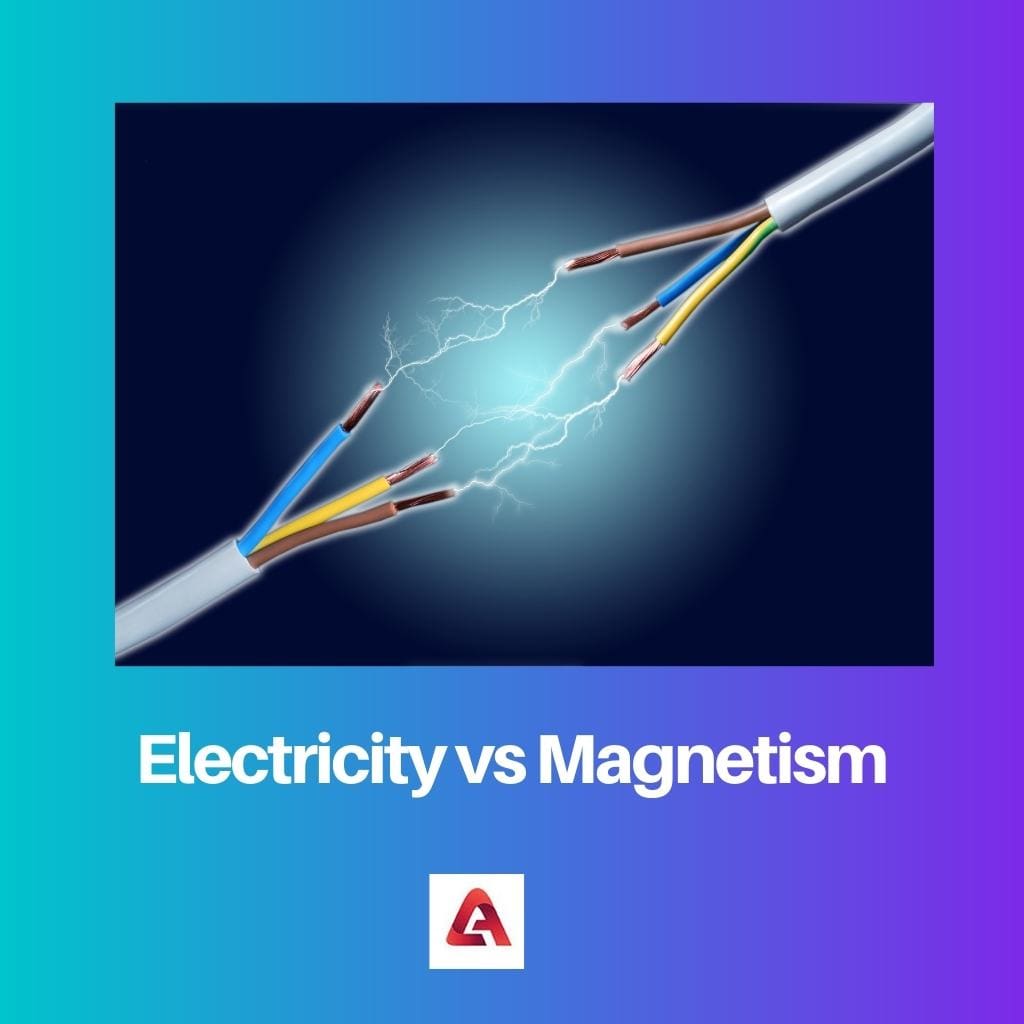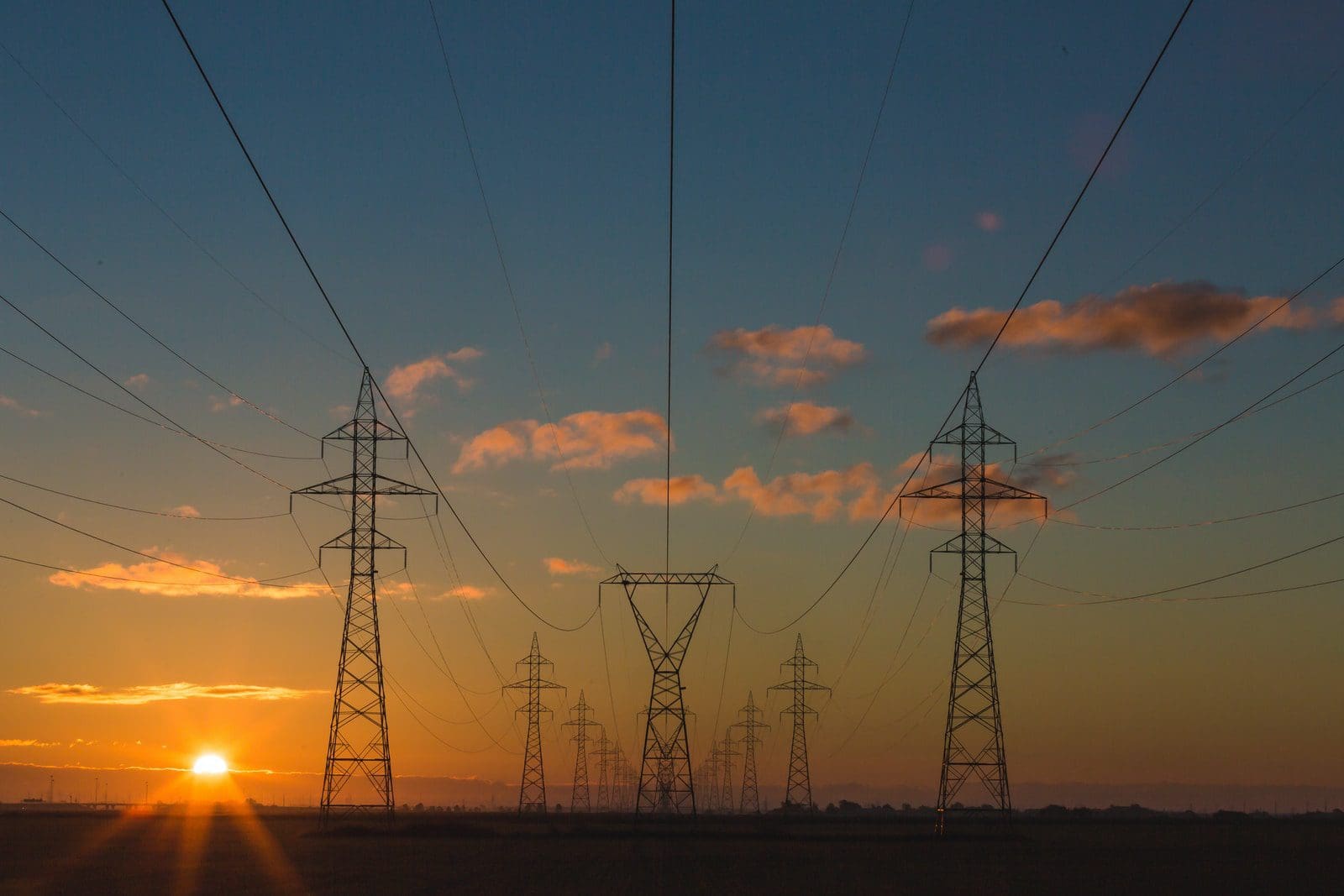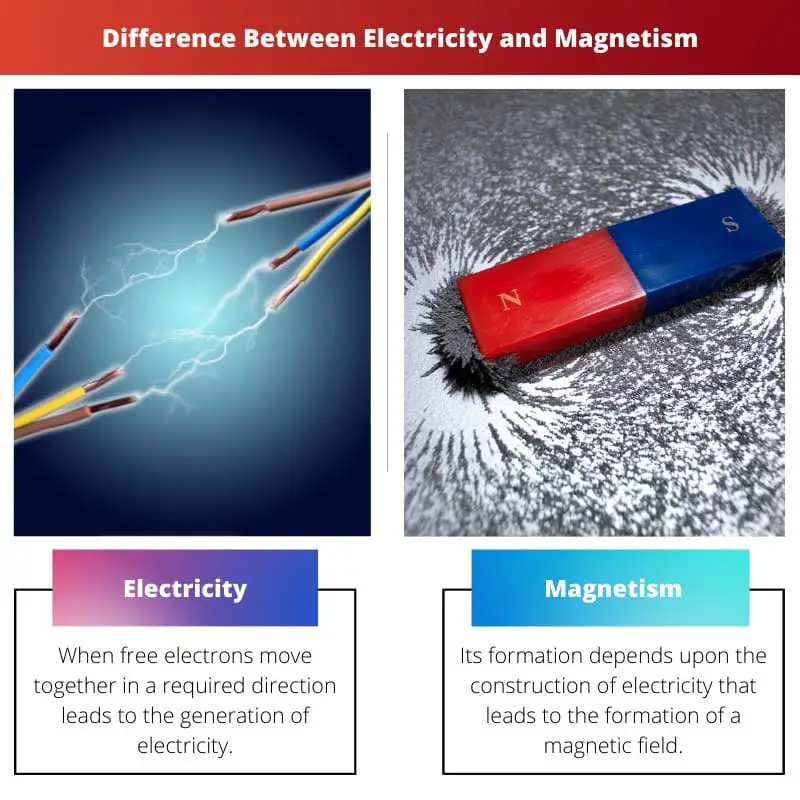Electricity involves the flow of electric charge through conductors, generating fields that exert forces on other charges. Magnetism arises from moving electric charges, creating magnetic fields that interact with other magnets or moving charges, demonstrating phenomena like induction and attraction/repulsion.
Key Takeaways
- Electricity involves the flow of electrons through a conductor, while magnetism is the force that causes certain materials to attract or repel each other.
- Electricity can produce magnetic fields, while magnets can create electric fields.
- Electricity is a form of energy, while magnetism is a property of certain materials.
Electricity vs. Magnetism
Electricity is a form of energy that results from the movement of charged particles, such as electrons or ions. Magnetism is a phenomenon that arises from the movement of electric charges. The force causes certain materials, such as iron, to attract or repel each other.

Comparison Table
| Feature | Electricity | Magnetism |
|---|---|---|
| Nature | Fundamental force associated with the presence and flow of electric charge. | Fundamental force associated with the movement of electric charge or the presence of magnetic moments. |
| Cause | Moving electric charge (static charge creates an electric field but not magnetism). | Moving electric charge (permanent magnets also exhibit magnetism due to the intrinsic spin of electrons). |
| Effect | Exerts force on other charged particles and creates an electric field. | Exerts force on magnetic materials and other magnets, creates a magnetic field. |
| Field Lines | Lines do not form closed loops, they point away from positive charges and towards negative charges. | Lines always form closed loops, never starting or ending in a single point. |
| Interaction | Like charges repel, unlike charges attract. | Like poles repel, unlike poles attract. |
| Applications | Powers electronics, lights, motors, generators, etc. | Used in compasses, MRI machines, speakers, electric motors, etc. |
| Measurement | Measured in volts (V), amperes (A), coulombs (C), etc. | Measured in tesla (T) or gauss (G). |
What is Electricity?
Electricity is a fundamental force of nature, essential for the functioning of modern society. It encompasses a wide array of phenomena, from the flow of electric charge to the generation and utilization of electromagnetic fields. Understanding electricity involves delving into its various components and manifestations.
Electric Charge and Its Properties
- Quantization: Electric charge exists in discrete units, with the smallest unit being the charge of an electron or proton.
- Conservation: In isolated systems, the total electric charge remains constant, meaning that charge cannot be created or destroyed.
- Attraction and Repulsion: Charges of opposite sign attract each other, while charges of the same sign repel each other. This fundamental principle governs the behavior of charged particles.
Electric Fields and Forces
- Coulomb’s Law: This fundamental law quantifies the force between two point charges and is given by an inverse square relationship proportional to the product of the charges and inversely proportional to the square of the distance between them.
- Superposition Principle: Electric fields obey the principle of superposition, meaning that the total electric field at any point is the vector sum of the electric fields produced by all the charges in the vicinity.
Electric Current and Circuits
- Resistance and Conductance: Materials exhibit varying degrees of opposition to the flow of electric current, characterized by resistance. Conductance is the reciprocal of resistance and measures how easily current can flow through a material.
- Ohm’s Law: This fundamental relationship states that the current flowing through a conductor is directly proportional to the voltage applied across it and inversely proportional to its resistance.
- Electric Circuits: Circuits are pathways through which electric current can flow, comprising various components such as resistors, capacitors, and inductors, interconnected by conductive wires. These circuits form the backbone of electrical systems, enabling the controlled flow and utilization of electricity for various purposes.

What is Magnetism?
Magnetism is a fundamental force of nature that manifests as attractive or repulsive interactions between objects with magnetic properties. It plays a crucial role in various natural phenomena and technological applications, ranging from the behavior of compass needles to the operation of electric motors and generators.
Magnetic Fields and Magnetic Forces
- Magnetic Field Lines: Magnetic fields are represented by imaginary lines that form closed loops around a magnet or a current-carrying conductor. These lines indicate the direction of the magnetic force exerted on a hypothetical north magnetic pole placed at any point in the field.
- Magnetic Poles: Similar to electric charges, magnets have poles – a north-seeking pole (north pole) and a south-seeking pole (south pole). Unlike electric charges, however, magnetic poles always exist in pairs, and isolated magnetic poles (monopoles) have not been observed in nature.
- Magnetic Force: Charges moving through a magnetic field experience a magnetic force perpendicular to both the direction of the field and the direction of their motion. This force is governed by the Lorentz force law and plays a crucial role in the behavior of charged particles in electromagnetic systems.
Magnetic Materials and Induced Magnetism
- Ferromagnetism: Ferromagnetic materials have magnetic domains, regions in which atomic magnetic moments are aligned. When exposed to an external magnetic field, these domains can align, resulting in a net magnetic moment for the material.
- Paramagnetism: Paramagnetic materials contain unpaired electrons, making them weakly attracted to magnetic fields. This attraction arises from the alignment of individual atomic magnetic moments in the direction of the field.
- Diamagnetism: Diamagnetic materials have paired electrons, which induce small, temporary magnetic moments in the opposite direction to an applied magnetic field. This effect results in a weak repulsion from the magnetic field.
Applications of Magnetism
- Electric Motors and Generators: Electromagnetic principles underpin the operation of electric motors, which convert electrical energy into mechanical energy, and generators, which do the reverse.
- Magnetic Resonance Imaging (MRI): In medicine, MRI machines utilize strong magnetic fields and radio waves to generate detailed images of internal body structures, aiding in diagnosis and treatment planning.
- Data Storage: Magnetic materials are crucial for data storage in devices such as hard disk drives and magnetic tape, where information is encoded in the orientation of magnetic domains.

Main Differences Between Electricity and Magnetism
- Nature of Force:
- Electricity involves the flow of electric charge and the creation of electric fields, which exert forces on charged particles.
- Magnetism arises from moving electric charges or intrinsic magnetic properties of materials, generating magnetic fields that interact with other magnets or moving charges.
- Source of Phenomena:
- Electricity primarily originates from the movement of electrons in conductive materials or the presence of charged particles.
- Magnetism originates from the alignment of atomic magnetic moments in materials or the movement of electric charges, such as current flow.
- Manifestations:
- Electricity is associated with phenomena such as electric current, voltage, resistance, and capacitance, powering devices and systems.
- Magnetism manifests through phenomena like magnetic fields, magnetic forces, and the behavior of magnetic materials, influencing the motion of charged particles and the properties of materials.
- Interaction with Matter:
- Electricity interacts with matter primarily through the movement of electric charge, affecting conductors, insulators, and semiconductors.
- Magnetism interacts with materials possessing magnetic properties, inducing magnetization, attracting or repelling magnetic materials, and influencing the behavior of charged particles moving through magnetic fields.
- Applications:
- Electricity powers a vast array of technologies, including electrical circuits, electronics, power generation, and communication systems.
- Magnetism finds applications in devices such as electric motors, generators, magnetic resonance imaging (MRI) machines, and data storage systems.


The distinction between static and current electricity, as well as the explanation of magnetic fields, provides a well-rounded understanding of these fundamental physics principles.
The article effectively communicates the fundamental differences between electricity and magnetism, laying a strong foundation for further exploration in the field of physics.
I appreciate how the article delves into the key takeaways and provides a good comparison table to understand the distinctions between electricity and magnetism.
Although the article touches on the uses of electricity and magnetism, a deeper exploration of practical applications would further enrich the content.
Electricity and magnetism are two fascinating phenomena in physics that are crucial for our understanding of the natural world.
While the content is informative, I believe there could be more depth in explaining the practical applications and implications of these physical phenomena in our daily lives.
The article could be enhanced by incorporating mathematical explanations of electricity and magnetism for a more complete analysis.
The use of examples to explain static and current electricity, as well as the interaction of magnetic poles, really aids in understanding these concepts better.
The comparison of electricity and magnetism in a table format is a clear and effective way to present the differences and similarities between these important concepts.
This article gives a comprehensive overview of electricity and magnetism, explaining their differences and behavior clearly.